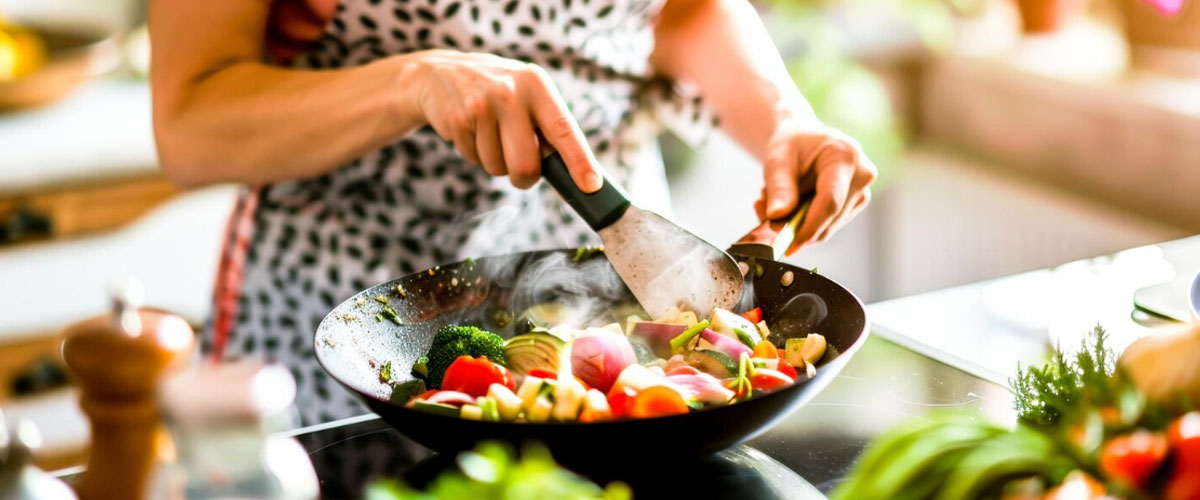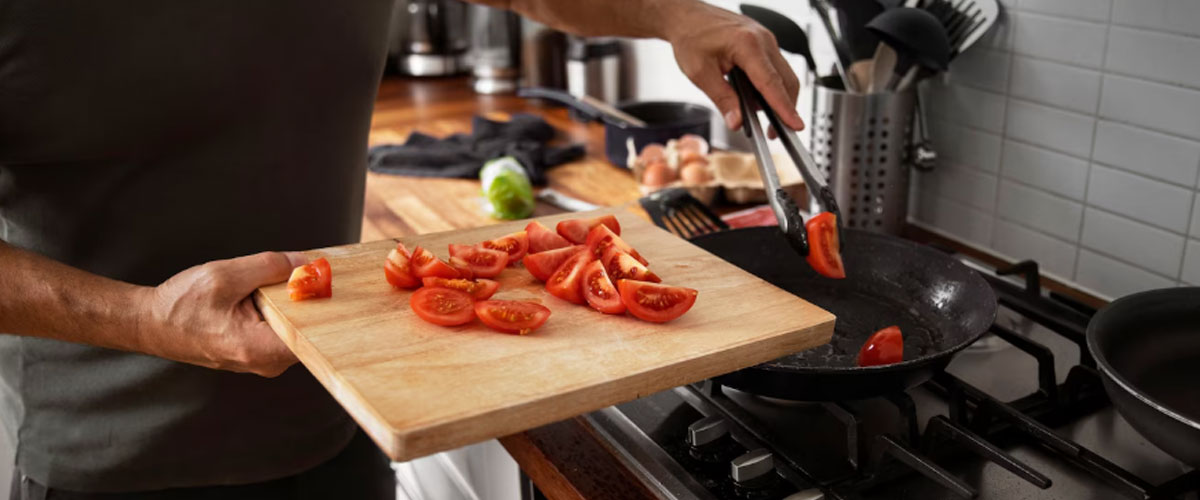- You have no items in your shopping cart
- Continue Shopping

Across Canada, from the fog-kissed coasts of Newfoundland to the sun-drenched prairies of Saskatchewan, kitchens are where comfort, culture, and creativity collide. Whether you’re simmering a pot of tourtière in Quebec or grilling salmon on a cedar plank in British Columbia, food is more than fuel—it’s tradition, connection, and joy. Now, a new ingredient is finding its way into Canadian pantries: CBD (cannabidiol). Legal, non-intoxicating, and derived from hemp, CBD is transforming how Canadians cook, especially when it comes to savory dishes.
Thanks to the Cannabis Act of 2018, high-quality CBD is widely available from coast to coast. And while many associate CBD with tinctures or gummies, culinary enthusiasts are discovering its potential in the kitchen—especially in savory recipes where its earthy, slightly nutty profile complements bold flavors like garlic, smoked paprika, and fresh herbs. When used thoughtfully, CBD doesn’t just add depth to your dishes; it brings science-backed wellness benefits right to your dinner table.
In this guide, we’ll explore how CBD enhances savory cooking, dive deep into its key benefits, and share innovative, Canadian-inspired recipe ideas that go beyond basic infusions. No step-by-step instructions here—just inspiration, flavor science, and practical tips to help you cook with confidence using trusted products like those from CBDMagic and CBD2HEAL.
Why CBD Belongs in Your Savory Kitchen
CBD isn’t just another wellness trend—it’s a functional ingredient with real potential. When infused into fats (like olive oil, butter, or coconut oil), CBD becomes highly bioavailable, meaning your body absorbs it more efficiently. This is especially important in savory cooking, where fats are abundant.
Unlike THC, CBD won’t get you high. That makes it perfect for family meals, weeknight dinners, or hosting friends without altering anyone’s state of mind. For Canadians who value clean, natural ingredients—think farm-fresh produce from Ontario, wild-caught fish from the Maritimes, or grass-fed beef from Alberta—CBD fits seamlessly into a whole-food, health-conscious lifestyle.
And let’s be clear: this isn’t about masking flavors. High-quality CBD oils, like full-spectrum tinctures from CBDMagic, have a mild, herbal taste that enhances rather than overwhelms. When dosed correctly (typically 5–15 mg per serving), it blends beautifully with umami, smoke, and spice.
Key Benefits of CBD in Savory Cooking
Before we fire up the stove, let’s unpack the core benefits of cooking with CBD—benefits backed by emerging research and real-world use:
1. Supports Natural Stress Relief After a Long Day
Canadians work hard. Whether you’re a teacher in Winnipeg, a nurse in Halifax, or a tech worker in Vancouver, stress follows you home. CBD interacts with the endocannabinoid system (ECS), helping regulate cortisol—the stress hormone. Enjoying a CBD-infused savory meal in the evening can promote a sense of calm without sedation, making dinner a true wind-down ritual.
2. Promotes Comfort in Joints and Muscles
From shoveling snow in Edmonton to hiking the Bruce Trail in Ontario, physical wear and tear is part of Canadian life. CBD is widely studied for its anti-inflammatory properties, which may help ease discomfort in joints and muscles. When infused into a warm, nourishing dish, it offers internal support alongside topical relief.
3. Enhances Post-Meal Relaxation and Sleep Quality
Many Canadians struggle with sleep—especially during long, dark winters. CBD may help regulate sleep-wake cycles by addressing underlying issues like anxiety or discomfort. A savory CBD dinner (think roasted root veggies or creamy mushroom pasta) can set the stage for deeper, more restorative rest.
4. Boosts Appetite in a Balanced Way
For those undergoing treatment, recovering from illness, or simply wanting to enjoy food more fully, CBD can stimulate appetite gently and naturally. This makes it a thoughtful addition to savory dishes for seniors, cancer patients, or anyone needing nutritional support.
5. Adds Antioxidant Power to Your Plate
CBD is a potent antioxidant, meaning it helps combat oxidative stress—the kind that contributes to aging and chronic disease. When paired with antioxidant-rich foods like tomatoes, kale, or wild blueberries (all Canadian staples), CBD amplifies your meal’s protective potential.
Cooking with CBD: What Canadians Need to Know
Not all CBD is kitchen-ready. For culinary use, choose full-spectrum or broad-spectrum CBD oils with:
- Third-party lab testing (COA)
- Organic hemp sourcing
- Clear mg-per-drop labeling
- Neutral or mild flavor profiles
Brands like CBD2HEAL and CBDMagic offer food-grade CBD tinctures specifically designed for cooking. Avoid isolate powders (they don’t blend well) and never heat CBD above 350°F (177°C)—high heat degrades cannabinoids.
Pro tip: Infuse CBD into fats after cooking. For example, drizzle CBD oil into a finished sauce, dressing, or melted butter. This preserves potency and ensures even distribution.
Innovative Savory CBD Recipe Ideas (Canadian-Inspired)
Let’s get creative. These dishes celebrate Canada’s diverse culinary heritage while showcasing CBD as a flavor-enhancing, wellness-boosting ingredient. Adjust CBD dosage based on your needs and product strength.
1. Nova Scotia Seafood Chowder with CBD Brown Butter
A Maritime classic gets a luxurious upgrade. Rich cream, tender haddock, clams, and potatoes simmered with thyme and bay—then finished with CBD-infused brown butter. The nutty, slightly herbal note of CBD deepens the umami and leaves you feeling grounded after one bowl. Serve with crusty sourdough from a local PEI bakery.
2. Alberta AAA Beef & Stout Stew with CBD Rosemary Oil
Slow-braised beef, root vegetables, and dark stout create a hearty prairie stew. Just before serving, stir in a CBD-rosemary oil infusion. The woodsy, peppery aroma complements the malt while supporting post-meal comfort—perfect for cold Calgary nights.
3. Quebec-Style CBD Poutine with Mushroom Gravy
Yes, poutine can be functional food. Golden fries, fresh cheese curds, and a rich mushroom gravy made with CBD-infused vegetable stock reduction. The earthiness of mushrooms + CBD = a savory synergy that elevates this comfort dish into guilt-free indulgence. Use gravy as the fat carrier for optimal absorption.
4. BC Cedar-Planked Salmon with CBD Maple Glaze
Wild sockeye salmon grilled on cedar, brushed with a glaze of CBD-infused maple syrup, Dijon, and smoked paprika. The sweetness of maple balances CBD’s herbal edge, while omega-3s + cannabinoids create a brain-boosting, inflammation-fighting powerhouse. Garnish with foraged chanterelles for a true West Coast vibe.
5. Ontario Harvest Grain Bowl with CBD Tahini Dressing
Nourishing, plant-forward, and deeply satisfying. Farro, roasted squash, kale, pickled beets, and toasted pecans—all drizzled with a creamy CBD-tahini-lemon dressing. This bowl is a love letter to fall farmers’ markets and supports gut health, energy, and focus in one vibrant meal.
6. Manitoba Wild Rice & Bison Sausage Skillet
Nutty wild rice (harvested from Saskatchewan lakes), lean bison sausage, cranberries, and sage come together in a one-pan wonder. Finish with a CBD garlic butter drizzle for richness and recovery support. Ideal for cabin weekends or post-hockey fuel.
7. New Brunswick Lobster Mac & Cheese with CBD Béchamel
Decadent? Yes. Worth it? Absolutely. Atlantic lobster, aged cheddar, and cavatappi in a silky CBD-infused béchamel sauce. The subtle nuttiness of CBD rounds out the sharpness of cheese, creating a next-level comfort dish that promotes relaxation without heaviness.
CBD Dosage Guidelines for Cooking
Start low. Most adults begin with 5–10 mg of CBD per serving. For a dish serving 4, that’s 20–40 mg total infused into the fat component.
| Dish Type | Suggested CBD per Serving |
|---|---|
| Soups/Stews | 5–8 mg |
| Sauces/Dressings | 8–12 mg |
| Main Proteins | 10–15 mg |
| Grain Bowls | 5–10 mg |
Always account for cooking loss—about 10–20% of CBD degrades with heat. Use a high-quality dropper for precision.
Safety, Storage & Best Practices
- Store CBD oil in a cool, dark place (like your spice cabinet).
- Never vape cooking oil—only use food-grade products.
- Avoid combining CBD with alcohol in large amounts; both affect the liver.
- Consult a doctor if you’re on medication (especially blood thinners).
- Label CBD-infused dishes when serving guests.
CBD has a clean safety profile, but effects vary. Some feel calm within 30 minutes; others notice benefits over days of consistent use.
The Future of CBD Cuisine in Canada
As more Canadians embrace functional foods, CBD is poised to become a kitchen staple—like olive oil or balsamic vinegar. Chefs in Toronto and Montreal are already experimenting with CBD dinner series. Home cooks are sharing infused recipes on Instagram. And with local hemp farming expanding in provinces like Manitoba and PEI, the future is fresh, sustainable, and delicious.
Cooking with CBD isn’t about getting high—it’s about eating smarter. It’s about turning everyday meals into moments of nourishment, balance, and joy.
Final Thoughts: Your Kitchen, Your Rules
From the first bite of CBD poutine in Gatineau to the last sip of chowder in St. John’s, savory CBD cuisine is redefining what it means to cook with intention. It’s not a gimmick—it’s an evolution.
So next time you’re browning garlic in butter, reducing a wine sauce, or tossing a salad, ask yourself: Could this be even better with CBD?
The answer, for more and more Canadians, is a resounding yes.
Shop online at CBD2HEAL for Canada’s best CBD oil. Fire up the stove. And let your kitchen become a space where flavor meets function—naturally, deliciously, and proudly Canadian.






